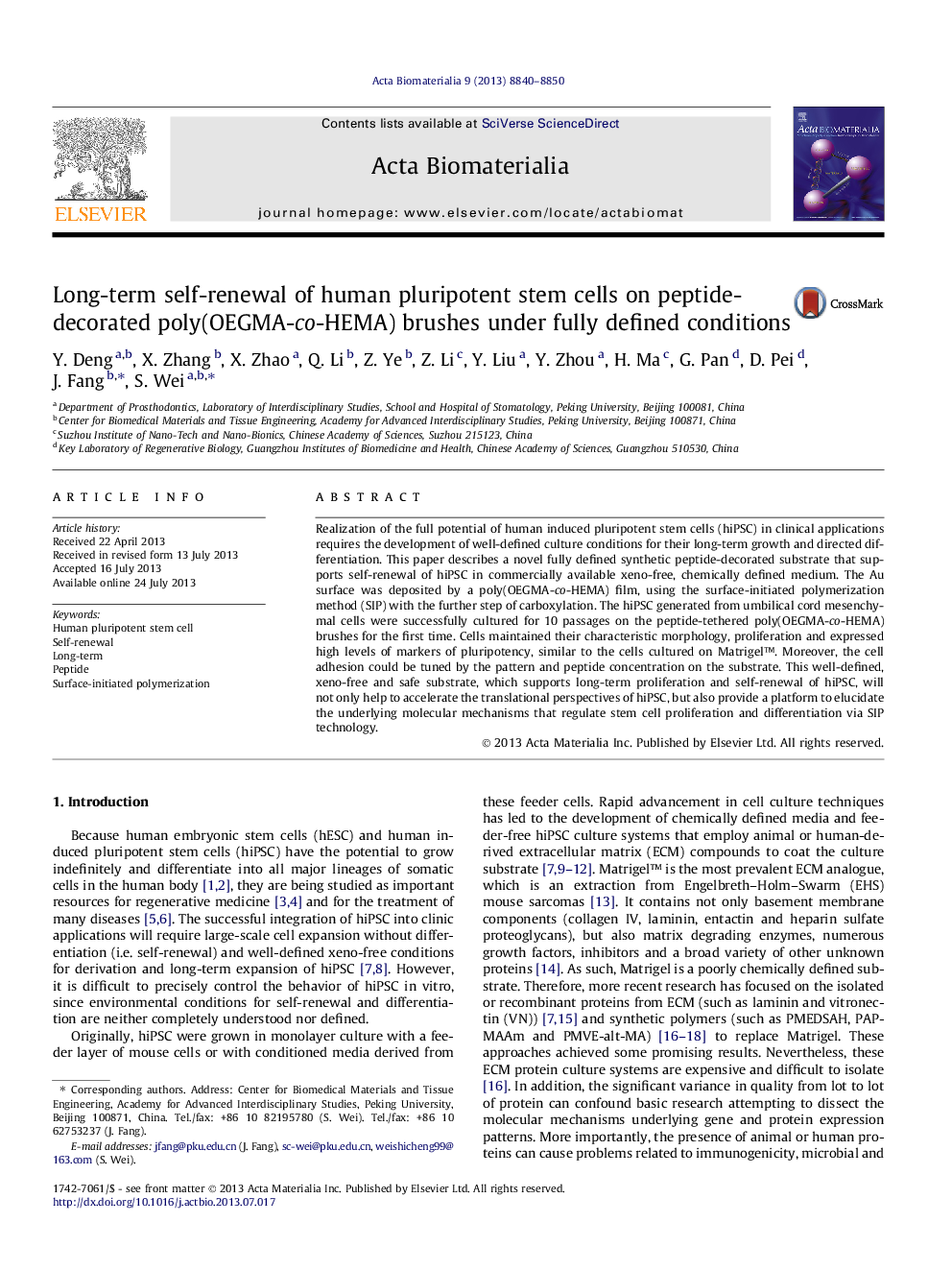| Article ID | Journal | Published Year | Pages | File Type |
|---|---|---|---|---|
| 10159465 | Acta Biomaterialia | 2013 | 11 Pages |
Abstract
Realization of the full potential of human induced pluripotent stem cells (hiPSC) in clinical applications requires the development of well-defined culture conditions for their long-term growth and directed differentiation. This paper describes a novel fully defined synthetic peptide-decorated substrate that supports self-renewal of hiPSC in commercially available xeno-free, chemically defined medium. The Au surface was deposited by a poly(OEGMA-co-HEMA) film, using the surface-initiated polymerization method (SIP) with the further step of carboxylation. The hiPSC generated from umbilical cord mesenchymal cells were successfully cultured for 10 passages on the peptide-tethered poly(OEGMA-co-HEMA) brushes for the first time. Cells maintained their characteristic morphology, proliferation and expressed high levels of markers of pluripotency, similar to the cells cultured on Matrigelâ¢. Moreover, the cell adhesion could be tuned by the pattern and peptide concentration on the substrate. This well-defined, xeno-free and safe substrate, which supports long-term proliferation and self-renewal of hiPSC, will not only help to accelerate the translational perspectives of hiPSC, but also provide a platform to elucidate the underlying molecular mechanisms that regulate stem cell proliferation and differentiation via SIP technology.
Related Topics
Physical Sciences and Engineering
Chemical Engineering
Bioengineering
Authors
Y. Deng, X. Zhang, X. Zhao, Q. Li, Z. Ye, Z. Li, Y. Liu, Y. Zhou, H. Ma, G. Pan, D. Pei, J. Fang, S. Wei,
